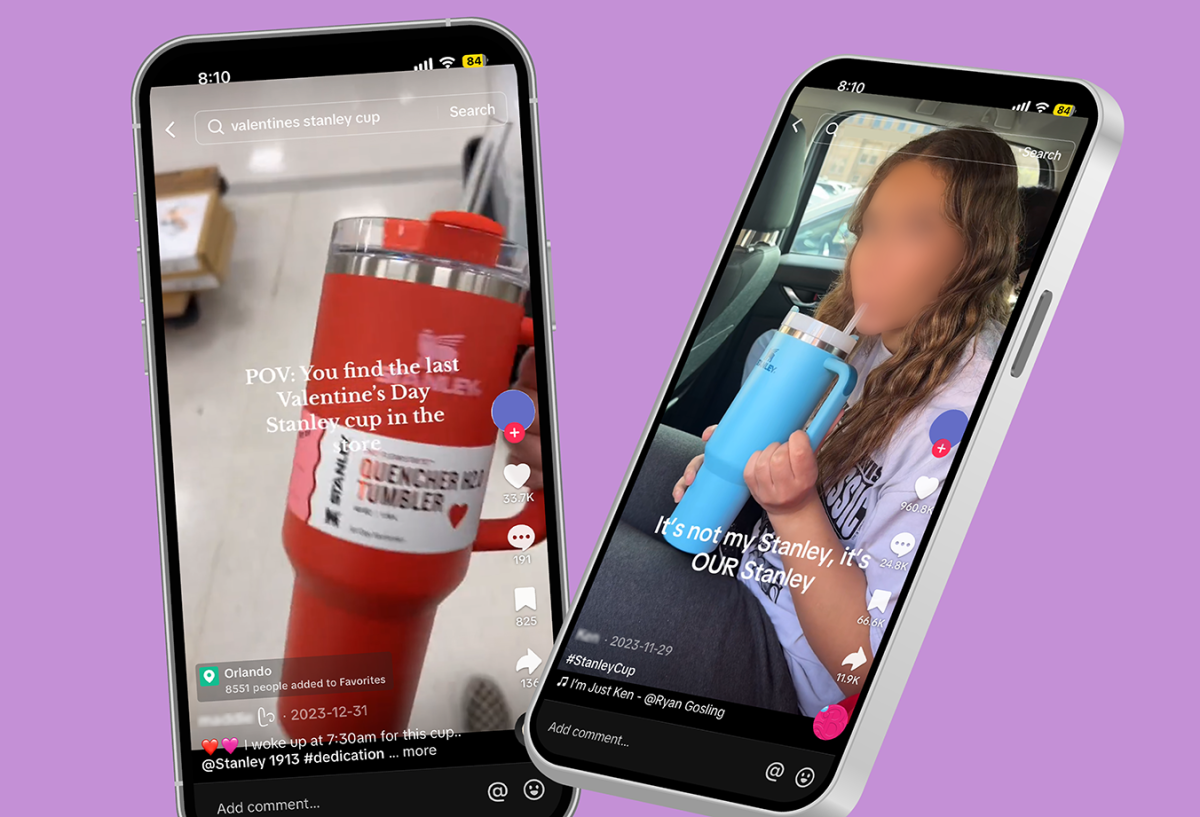Like it or not, we have all fallen for the marketing of online trends.
Every other post you scroll past is a subtle, or not so subtle, marketing tactic of influencers and companies.
While the effect influencers have on consumerism may seem insignificant to some, the control online trends have is starting to take a toll on the shopping experience.
One TikTok user posted a video of people scrambling to get their hands on the viral Valentine’s Day Stanley cups.
Over the display hangs a sign that reads, “2 PER GUEST.” Even so, you still hear someone in the background have to remind the shoppers, “You guys are limited two per guest.”
Similar videos have surfaced since the cups’ initial retail release, typically depicting masses of people running toward or surrounding the display.
When I first heard about the fascination with the cups, I went to look up a picture. I assumed since people were going so crazy for the products then they had to have at least some kind of special design or something on them.
I reloaded the page several times, assuming that I had accidentally clicked the wrong link.
I couldn’t believe my eyes when I realized I had the right image.
They are pink and red. That’s it.
There is nothing inherently “special” about these cups. So, why are people climbing over each other to get them?
The Stanley “Quencher” cup rose to fame online in 2020. Prior, the company was mainly focused on the male-dominated market of outdoorsy equipment.
Shelley Kohan, a retail management professor, credited influencers when it came to the sudden popularity of the cup in an interview with The New York Times.
“The influencers are big-time influencers, but it’s also you and me, the consumer, making videos about their experiences with the Stanley cup as an example,” Kohan said
Kohan also suggested that the influence of online trends doesn’t stop after the initial spark of interest in the cups.
When discussing the special edition Valentine’s Day cups, Kohan said, “Now this reusable cup becomes a fashion item accessory like a handbag or belt.” She also added that limited editions turn into a “fashion frenzy.”
It is also important to note that the power of online trends is not limited to Stanley cups.
Consumers spend hours watching unboxing videos and reviews online before they eventually buy a trending item.
In June of last year, CBS compiled an entire list of kitchen gadgets that were viral on TikTok at the time.
Marketing strategies are some new phenomena being forced on consumers, but apps like TikTok and Instagram have enhanced the effectiveness of marketing campaigns.
Angeline Scheinbaum, an associate professor of marketing at Clemson University, spoke with BBC on the effects of personal relationships and consumerism, stating, “With these micro-influencers, the consumer is able to feel more confident that they’re buying from someone [who] uses that product … they have a little bit more of an emotional relationship.”
While it may appear as if online influencing and constant out-of-stock shelves are the new norm of our shopping experience, some are trying to regain control of the market.
“Deinfluencing” is a new trend online, pushing users to fight back against the new world of influencers and blind consumerism.
To battle overconsumption and the buying of overpriced items, users are sharing hauls of items they will not be purchasing again and items that are dupes for more expensive ones, according to Forbes.
Maybe deinflencing is the answer to correcting our bad spending habits, or maybe it’s another trend that will quickly fade into the background.
Either way, watching the videos of consumers rushing after Stanley cups has forced me to step back and analyze my own purchases. Perhaps we could all benefit from a break from online trends.
































































































































































